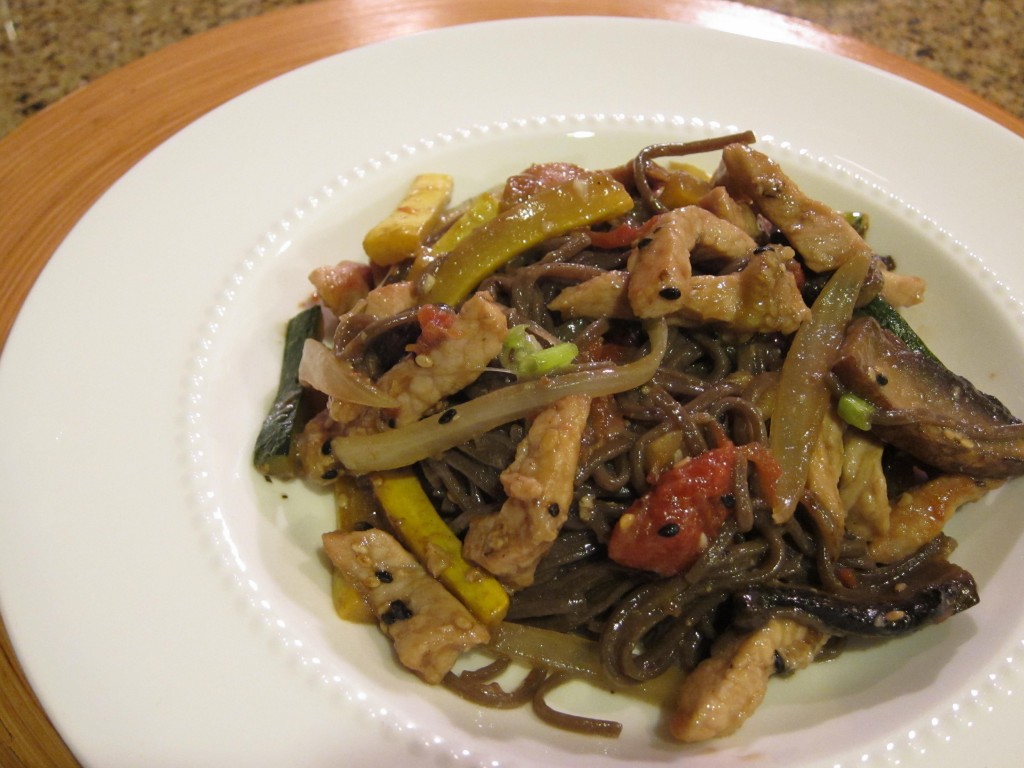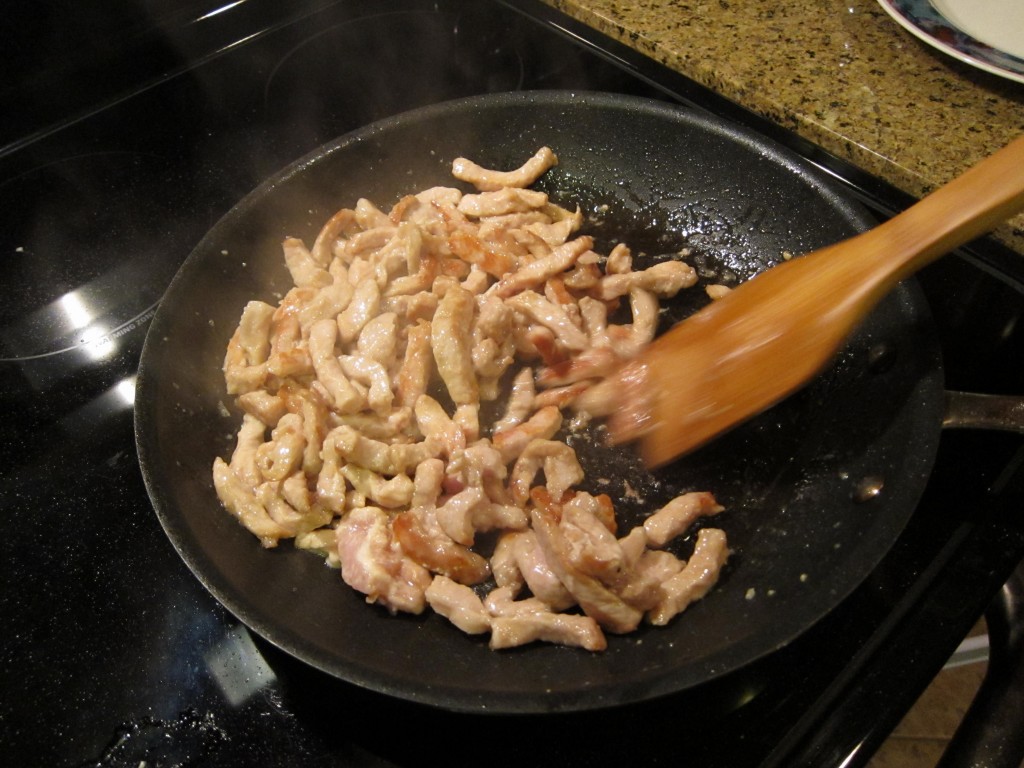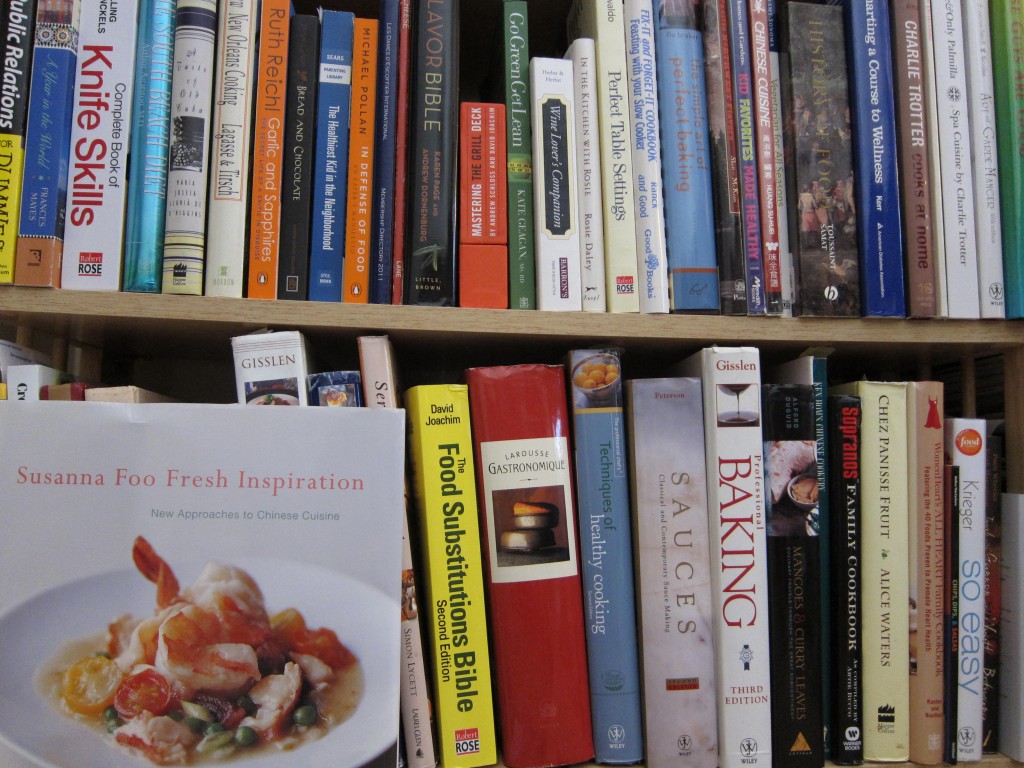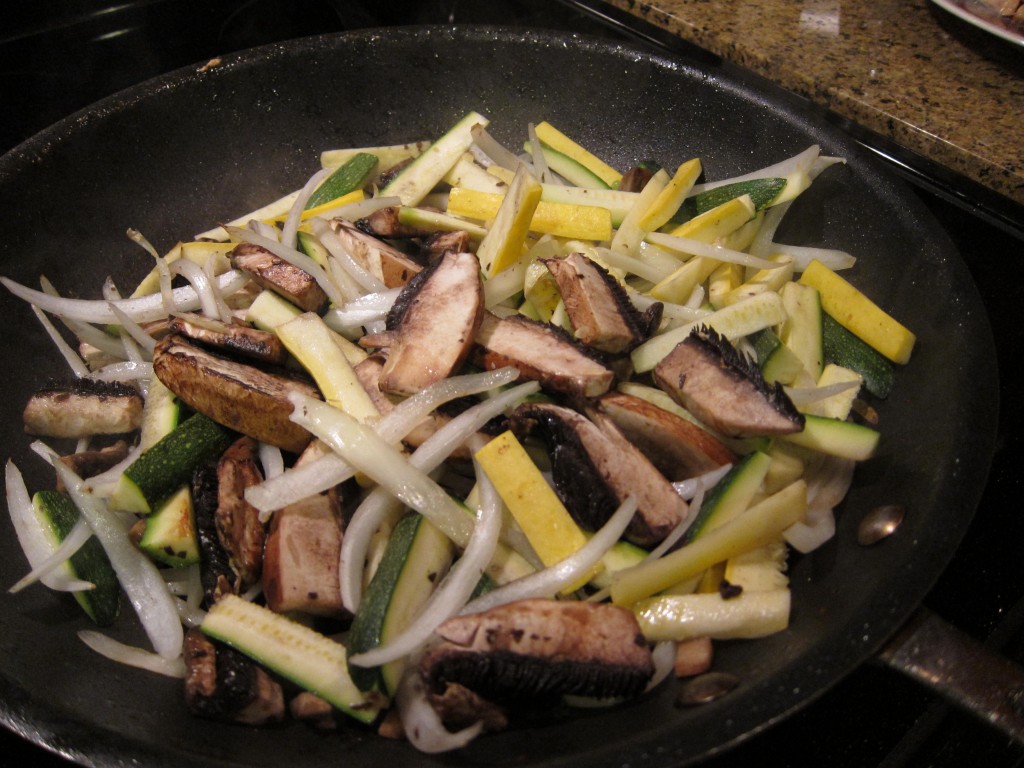Pork & Vegetable Lo Mein Recipe

 This past weekend marks the first one since May that I was able to sleep two nights in a row in my marvelous bed. The best part about it was that we did almost nothing – swam in the pool, worked out, napped 3 hours, and commenced my 40-Day Freezer Challenge.
This past weekend marks the first one since May that I was able to sleep two nights in a row in my marvelous bed. The best part about it was that we did almost nothing – swam in the pool, worked out, napped 3 hours, and commenced my 40-Day Freezer Challenge.
 Friday night, the only plan I had for dinner was to use the fresh pork chops in the fridge before too many days passed beyond their “sell by” date. As much as I love this cut of meat, I needed a break from my traditional marinate-and-grill recipe.
Friday night, the only plan I had for dinner was to use the fresh pork chops in the fridge before too many days passed beyond their “sell by” date. As much as I love this cut of meat, I needed a break from my traditional marinate-and-grill recipe.
 Whenever I’m in a quandary about what to make for dinner, I sit on the floor next to my cookbook collection and start flipping pages. My eyes landed Susanna Foo Fresh Inspiration: New Approaches to Chinese Cuisine. It was a book I had acquired at her Philadelphia restaurant, Susanna Foo Chinese Cuisine. I didn’t have all of the ingredients listed in the recipe for Pork Lo Mein with Tomatoes and Fresh Herbs, but no worries. I’m a recipe developer.
Whenever I’m in a quandary about what to make for dinner, I sit on the floor next to my cookbook collection and start flipping pages. My eyes landed Susanna Foo Fresh Inspiration: New Approaches to Chinese Cuisine. It was a book I had acquired at her Philadelphia restaurant, Susanna Foo Chinese Cuisine. I didn’t have all of the ingredients listed in the recipe for Pork Lo Mein with Tomatoes and Fresh Herbs, but no worries. I’m a recipe developer.
 I made a few substitutions and came up with my own version.
I made a few substitutions and came up with my own version.
Pork & Vegetable Lo Mein Recipe
Makes 4 entrée servings
Prep and cook time: Less than an hour from start to finish
2 bundles buckwheat noodles (or substitute 6 ounces (171 g) dry spaghetti or long Chinese noodles)
2 pork chops, trimmed of all fat
3 tablespoons (45 ml) reduced sodium soy sauce, divided
3 tablespoons (45 ml) corn oil, divided
1 teaspoon cornstarch
1 small onion, cut in half and thinly sliced
1 Portobello mushroom, cut in half and thinly sliced
1/2 zucchini, cut into thin batons
1/2 yellow squash, cut into thin batons
2 cloves garlic, minced
2 tablespoons (28 ml) vermouth (or vodka)
1 green onion, thinly sliced (2 would be better, but I only had 1)
1/2 cup (120 ml) chicken broth (Freezer Challenge – check!)
1 – 14 ounce (400 g) can whole tomatoes, squeezed by hand into smaller pieces (or use 1 big, fresh chopped tomato)
2 tablespoons (28 ml) Annie Chun’s Shitake Soy Ginger Asian Sauce (I did not have the oyster sauce called for in recipe.)
1 teaspoon fish sauce
Optional: 1/2 cup (8 g) chopped fresh cilantro or basil (I did not have either but I’m sure an herb would have enhanced this dish.)
Cut pork chops in half lengthwise and then into 1/8-inch strips. Lay each strip flat and cut again into 1/8-inch strips. Put strips in medium bowl. Add 2 tablespoons (28 ml) soy sauce, 1 tablespoon (15 ml) corn oil and cornstarch. Mix well.
Cook the noodles in a large pot of boiling water until just al dente. Drain in a colander and rinse under cold running water.
Heat the remaining 2 tablespoons (28 ml) oil in a large skillet or wok over high heat. Place pork strips in hot skillet and sear. Once pork is browned on one side, toss or stir to brown the other side, about 2 minutes. Using tongs or a spoon, transfer pork to a plate and set aside.
Add onion, mushrooms, squashes, and garlic to pan and cook until tender, about 3 minutes. Pour in the vermouth and heat until most evaporates. Add the green onion, broth, tomatoes, pork, noodles, and sauces and cook for 3 to 5 minutes until noodles are hot and liquid is absorbed. Sprinkle with cilantro or basil and serve with additional soy sauce and Sriracha Rooster Sauce.
Disclosure: Annie Chun’s sauce was sent to me as a free sample.
You may also like:
Vegetable Egg Role Recipe with Soy-Mustard Sauce
How to Get Your Kids Involved in the Kitchen
Coasting Through the Freezer Challenge
Pork & Vegetable Lo Mein

By Published: July 11, 2011
- Yield: 4 servings (4 Servings)
This past weekend marks the first one since May that I was able to sleep two nights in a row in my marvelous bed. The best part about …
Ingredients
- 2 bundles buckwheat noodles (or substitute 6 ounces (171 g) dry spaghetti or long Chinese noodles)
- 2 pork chops trimmed of all fat
- 3 tablespoons (45 ml) reduced sodium soy sauce divided
- 3 tablespoons (45 ml) corn oil divided
- 1 teaspoon cornstarch
- 1 small onion cut in half, and thinly sliced
- 1 Portobello mushroom cut in half, and thinly sliced
- 1/2 zucchini cut into thin batons
- 1/2 yellow squash cut into thin batons
- 2 cloves garlic minced
- 2 tablespoons (28 ml) vermouth (or vodka)
- 1 or 2 green onion thinly sliced
- 1/2 cup (120 ml) chicken broth
- 1 14 ounce (400 g) can whole tomatoes squeezed by hand into smaller pieces (or use 1 big, fresh chopped tomato)
- 2 tablespoons (28 ml) Annie Chun's Shitake Soy Ginger Asian Sauce
- 1 teaspoon fish sauce
- 1/2 cup (8 g) chopped fresh cilantro or basil optional
Instructions
- Cut pork chops in half lengthwise and then into 1/8-inch strips. Lay each strip flat and cut again into 1/8-inch strips. Put strips in medium bowl. Add 2 tablespoons (28 ml) soy sauce, 1 tablespoon (15 ml)corn oil and cornstarch. Mix well.
- Cook the noodles in a large pot of boiling water until just al dente. Drain in a colander and rinse under cold running water.
- Heat the remaining 2 tablespoons (28 ml) oil in a large skillet or wok over high heat. Place pork strips in hot skillet and sear. Once pork is browned on one side, toss or stir to brown the other side, about 2 minutes. Using tongs or a spoon, transfer pork to a plate and set aside.
- Add onion, mushrooms, squashes, and garlic to pan and cook until tender, about 3 minutes. Pour in the vermouth and heat until most evaporates. Add the green onion, broth, tomatoes, pork, noodles, and sauces and cook for 3 to 5 minutes until noodles are hot and liquid is absorbed. Sprinkle with cilantro or basil and serve with additional soy sauce and Sriracha Rooster Sauce.

 I'm a chef nutritionist, not the food police. I eat cookies but make sure to eat my broccoli too.
I'm a chef nutritionist, not the food police. I eat cookies but make sure to eat my broccoli too.


The pork industry defends horrendous cruelty to animals — factory farmers keep breeding pigs locked in two-foot-wide crates where the pigs can’t even turn around for nearly their entire lives. Eight states have passed laws against this type of animal abuse, yet groups like the National Pork Producers Council still support it.
More info at this link: http://www.humanesociety.org/news/press_releases/2010/12/smithfield_pigs_121510.html
t
Thanks for the link, John. I’ll take a look. Just a few weeks ago I met some pig farmers (one conventional, one organic) at the International Association of Culinary Professionals, where they showed slides with photos of their farms. In talking with other people too, I got the impression that like any profession, the level of ethics varies. I think it’s a good idea to learn as much as possible about the practices of the companies we support and purchase from.
Michelle